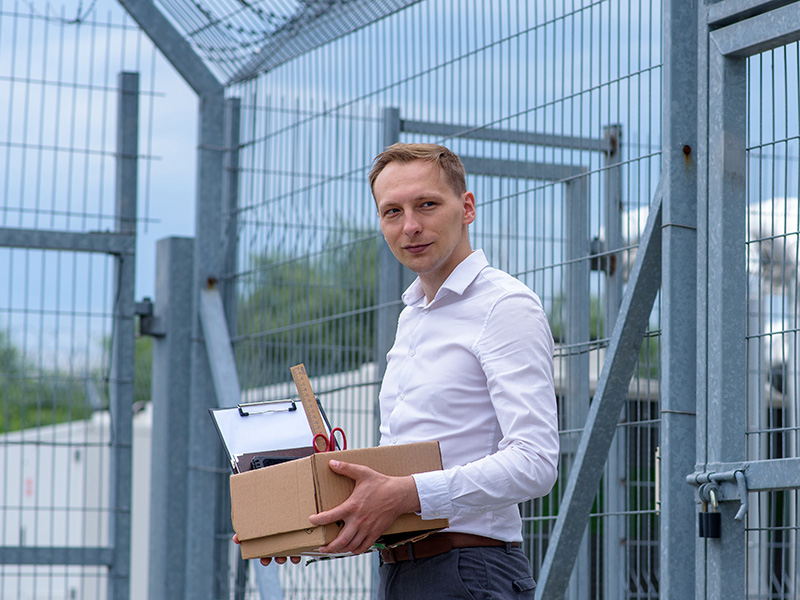When you step back and consider how drastically things have changed since the mid-2000s, the explosion of data-driven insights over the course of the last decade and half has been nothing short of breathtaking. The emergence of cloud-infrastructure has enabled businesses of all sizes to not only collect and store massive amounts of data, but to now leverage that data in unprecedented ways. Customer purchasing insights, machine learning models, just-in-time supply methodologies, and even optimized advertisement designs all rely heavily on leveraging massive amounts of data to extract unique, and valuable, insights.
To this day, companies continue to grapple with issues related to data. From data collection and storage to data governance and data-driven business intelligence, organizations looking to get or maintain an edge in their respective industries will often rely on outside expertise to help navigate these uncharted data waters.
With over a decade of experience helping clients with technology and data-related challenges, we’ve seen first-hand how demand for data and data services has exploded in just the past few years. In fact, because of our work in this space, we’ve been able to greatly expand our data-related services using industry and customer insights.
In just two short years, Resultant VP of Data Analytics and Development Michael Schwarz has shepherded his data analytics and development team from a lean 20-person crew to a full-fledged squadron of well over 130 employees. And while the growth has brought new capabilities and expanded capacity to an already stellar team—all while providing incredible value helping clients thrive—it hasn’t been without its challenges. Expansion presents a unique set of issues as organizations struggle to maintain existing responsibilities while simultaneously executing complex internal maneuvers to align teams around strategic initiatives and future work. Navigating this process is never easy and accelerating the process to ensure exceptional service and partnership to clients tends to make things all the more precarious.
Managing Rapid Expansion for Data Analytics Teams
So, what are the keys for making a transition like this successful? Schwarz identified four key insights he believes delivered the biggest positive impact for the Resultant data analytics and development team expansion, as well as for our client outcomes.
1. Encourage mentorship and collaboration
“We thrive in an environment rich in mentorship and collaboration. That means we help each other out. We go out of our way to look for ways to build skills into those around us.”
Michael Schwarz, Resultant VP of Data and Development
One of the biggest takeaways Schwarz homed in on was the unique combination of active collaboration and mentorship. These two used in tandem produce a powerful antidote for the confusion and uncertainty that comes with change in general, but during expansion in particular. Being accountable for one another and, as Schwarz puts it “working out loud” ensures that no one gets left behind and, that as new skills and processes are acquired individually, they are immediately seeded across teams and across the broader group ensuring that knowledge flows freely. This is especially important as new team members are added. While general company onboarding helps people acclimate to a new organization, Michael’s data team takes a personal approach to each new employee, matching them with a veteran and empowering team leads to work closely on data-specific roles and tasks.
In addition, Schwarz instituted a policy of small team and 1-on-1 daily stand-ups. Teams start their days together – which has been challenging in the midst of a pandemic – but they’ve adapted to that as well. Whether in-person or virtually, these daily syncs build comradery and provide an open platform for teams and leaders to candidly share successes and challenges. Short conversations in these meetings typically lead to more formal follow-ups and ongoing discussions around topics and tools which help cascade knowledge and crowdsource innovative solutions to tough problems.
2. Cultivate and empower talent
“We’ve invested way more into specialization. We created talent development programs. We created new leadership positions within the team and then promoted more than 20 existing employees into mentor and leadership roles.”
Michael Schwarz, Resultant VP of Data and Development
Another issue to tackle during a time of rapid growth is that of personnel – not only from a raw recruiting standpoint, but also from an organizational leadership and structural perspective. What changes need to take place to realign teams around what is important now and what will be important in the years to come?
Luckily, one of the key core competencies of Resultant is that of organizational change management and structural overhauls. Using the organizations’ core strategic vision as a roadmap, Schwarz worked with the executive team to develop a vision around deep and wide expertise in eight key competencies: Data Architecture and Engineering, Data Science, Business Intelligence, Application Development, Solution Delivery, Data Governance, Change Management, and Digital Transformation.
Once the structure was envisioned, the process of building began. This meant lots of work with the Resultant talent recruitment team to find the right individuals with the right skill sets needed. In addition, Schwarz empowered his existing team. He promoted talent from within as a way of spreading informed guideposts throughout his organization – people who understood the vision and who could champion it to the myriad new people jumping on board.
Simultaneously, a clear career development path was formulated and communicated to the team. This plan helped set a course for new hires and experienced employees alike; making clear to all what was expected to progress and what success within the organization looked like.
3. Recruit skilled leaders
“In a change of this size and scope, where you’re looking to add new competencies to the team, it’s inevitable that hiring the right leaders to help fill in those gaps becomes necessary.”
Michael Schwarz, Resultant VP of Data and Development
As Schwarz was working to empower and promote team members from within, he also needed to build up competencies in areas where, strategically, the team needed to go, but lacked the necessary knowledge to get there. Leveraging the Resultant talent recruitment team and leaning on the marketing and communications teams within the organization, an all-out blitz was embarked upon to find leaders to help widen the teams’ knowledge.
Luckily, because of the stellar reputation Resultant had with existing clients and within the industry, finding leaders to come in and join wasn’t as hard as originally envisioned. Schwarz attributes this to three key factors:
- We think in terms of solutions, not skills
- Finding the right people is much easier when you come from a place of solutions. Finding solutions for the complex issues our clients face takes innovation, creativity, and boldness, and it’s these skills that good leaders have and they, in turn, are attracted to organizations which provide an outlet for them.
- We are technically agnostic
- Shoe-horning leaders into a “you only do this” box may be great for certain organizations, but not Resultant. Instead, we approach every interaction as if it were a completely blank slate. Instead of pushing a certain technology or tool, we look at each problem holistically, understanding not just the technical aspects of what’s going on, but also, the people involved. Leaders are empowered to work in tandem with the client to find the best solution – not just the one they are most familiar with.
- Smart people want to be around other smart people
- As anyone who’s ever worked on a dysfunctional team knows, it’s draining. 40-hour weeks in an environment where people aren’t pulling their weight and where drama abounds can quickly feel like 70. But the opposite is true as well. Competent leaders enjoy working with high-performing, smart teams. Leaders want to come into an environment where the people are constantly working to make each other better.
4. Support a culture of open communication and learning
“We work out loud. We review each other’s code. But, even more than that. We support innovation. We want people evaluating new tools and technologies and we make sure that ongoing learning a top priority. Individually it’s important – no doubt – but, organizationally, its critical for us to stay at the bleeding edge.”
Michael Schwarz, Resultant VP of Data and Development
The fourth key insight Schwarz identified as critical to help a fast-growing organization, is to develop and lean into a culture of openness and learning.
In terms of communications, this is achieved both formally and informally. Along with the daily small group stand-ups mentioned earlier, larger teams meet at least weekly, and leaders make sure that 1-on-1’s are set aside for not just running through to-do lists, but also learning and development priorities. Learning budgets are available for every member of every team and new skills and certifications are constantly celebrated.
This culture of ongoing learning has persisted throughout the rapid period of growth the team has just been through. In fact, it’s contagious. New team members are thrilled with the prospect of being able to enhance their marketable skills while at work, and, as a result, the overall competencies of the team continue to improve – leading to better project outcomes and happier clients.
Positioned to Help at Every Stage of the Client Journey
“I think our teams ahead of the technology curve. But, more importantly, I think we’re uniquely positioned to help at every stage of the customer journey.”
Michael Schwarz, Resultant VP of Data and Development
While the expansion of the team isn’t yet complete – and probably won’t be for some time – there is a palpable excitement around where Resultant finds itself today in terms of being able to offer a broad range of valuable data solutions to organizations of all shapes and sizes.
Whether it’s a small organization beginning to realize it’s got a data governance problem, a government agency looking to visualize information to make more informed decisions, or an enterprise-scale customer that needs help creating a tuned machined-learning model to process terabytes of real-time data, Resultant’s team of data analytics professionals is ready to help chart a path forward.
“What we try to do from a solution standpoint is meet clients where they’re at, and help them advance their data footprint, analytics strategy, and the way that they can translate information into value.”
Learn more about Data and Development at Resultant
Learn more about working at Resultant and the growing data team
Meet a few members of the team:
- Anna Peterson, BI Team Lead
- Bernardo Unzueta, Director of Data Architecture and Engineering
- Max Brundige, Senior Dev Consultant
- Amrutha Poulikottil, Data Science Manager
- Alexa Kovacs, Data Scientist
Share:







